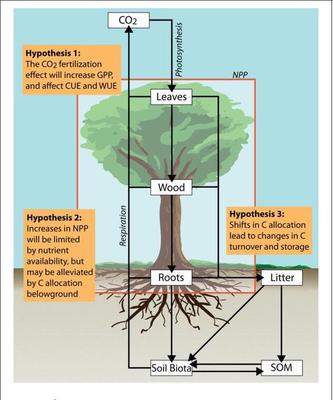Modeling drivers of forest belowground productivity and carbon allocation
Forests are threatened by a multitude of stressors, including anthropogenic disturbances and climate change. Assessing how forests will respond to these stressors requires a comprehensive understanding of net primary productivity (Npp), environmental constraints on growth, and adaptive capacity. A parameter of significant uncertainty is belowground Npp (bNpp), which can account for up to 80% of total Npp but is poorly estimated and rarely measured directly. We used a global dataset of direct, field-based measurements of aboveground and belowground primary productivity and 21 climatic and soil variables to identify potential constraints on bNpp and belowground carbon allocation. Across biomes, soil variables, rather than climate variables, were the main drivers of bNpp and belowground allocation. This suggests that soil nutrient dynamics, especially soil nutrient pool and flux variables, must be explicitly modeled to more accurately predict feedbacks between climate, productivity, and within-tree carbon allocation. Within biomes, environmental drivers of belowground allocation varied between low vs. high allocation forests, indicating that environmental drivers are site-specific and the development of within-biome, site-scale classifications for forest ecosystems could be useful. Changes in soil variables, such as increasing soil nitrogen pools, caused abrupt and large decreases in bNpp for boreal, but not cold temperate forests. These threshold-like shifts indicate that boreal forests might have lower adaptive capacity and higher sensitivity to disturbances than cold temperate forests. With 70% of boreal forests characterized by low bNpp, disturbances such as nitrogen deposition could cause large-scale decreases in bNpp that could push these forests beyond their adaptive capacity.

*Hofhansl, Florian, Kelly M. Andersen, Katrin Fleischer, Lucia Fuchslueger, Anja Rammig, Karst J. Schaap, Oscar J. Valverde-Barrantes, and David M. Lapola. “Amazon forest ecosystem responses to elevated atmospheric CO2 and alterations in nutrient availability: filling the gaps with model-experiment integration.” Frontiers in Earth Science 4 (2016): 19.